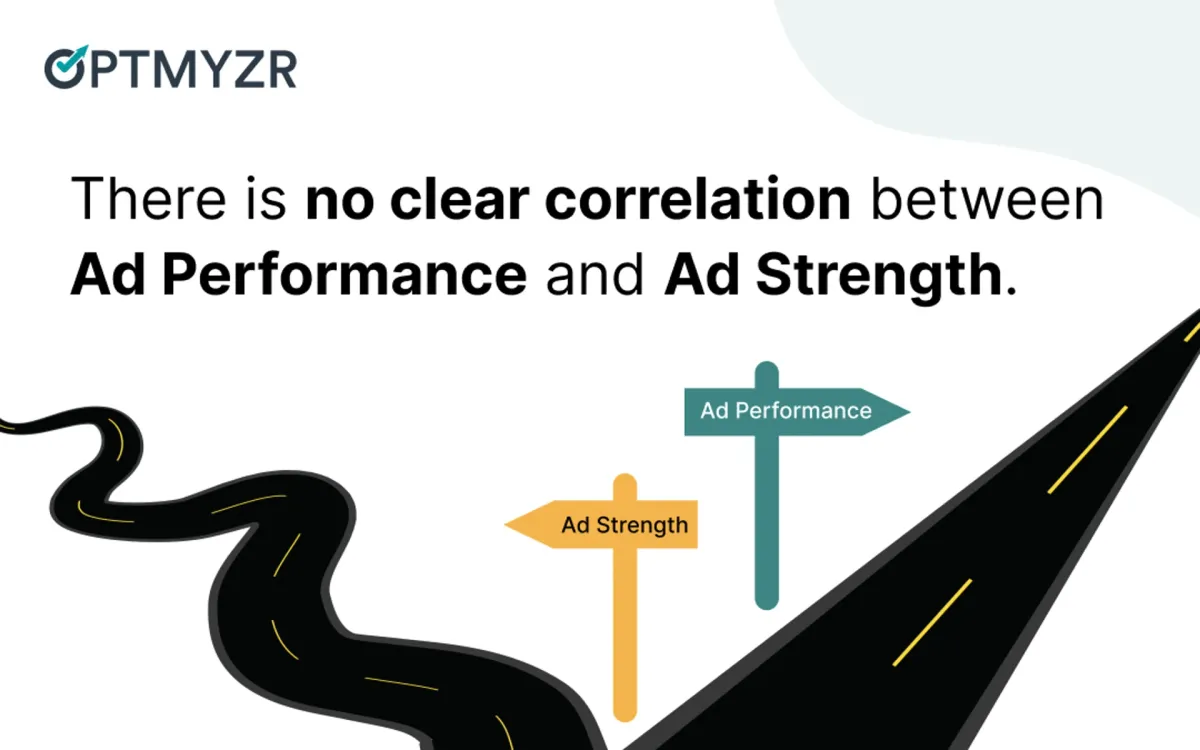
Optmyzr yesterday released a study examining the impact of various ad creative choices on Google Ads performance. The research, which analyzed data from over 22,000 accounts and more than 1 million ads, provides valuable insights into the effectiveness of different ad optimization strategies.
According to the study, several commonly held beliefs about ad creation may need to be reconsidered. The research team at Optmyzr, a leading provider of PPC management software, conducted an in-depth analysis of Responsive Search Ads (RSAs), Expanded Text Ads (ETAs), and Demand Gen ads. Their findings challenge some long-standing assumptions about ad creation best practices.
One of the most surprising revelations from the study is the lack of correlation between Google's Ad Strength metric and actual ad performance. While Google has stated that Ad Strength is not a ranking factor, many marketers have placed significant emphasis on achieving high Ad Strength scores. However, the data suggests that ads with "average" Ad Strength often outperform those rated as "excellent" in terms of key performance indicators such as cost per acquisition (CPA), conversion rate, and return on ad spend (ROAS).
Fred Vallaeys, co-founder of Optmyzr, commented on this finding: "A higher Ad Strength doesn't mean a better CTR or a better conversion rate or a better Quality Score. If you're new to advertising or don't know what's going to work, consider this a piece of advice. But if you're an experienced advertiser, go ahead and do what you do best. Create the ad that resonates well with your target audience and keep the focus on performance."
The study also examined the impact of pinning ad assets, a practice that allows advertisers to designate specific elements to appear in particular positions within an ad. Contrary to the belief that pinning all elements provides better control, the data shows that ads with some or no pinned elements generally perform better in terms of conversion-based metrics. However, fully pinned ads did show a slight advantage in click-through rates (CTR).
Another intriguing finding relates to the use of title case versus sentence case in ad copy. Historically, many advertisers have favored title case, especially for headlines. However, the study reveals that sentence case often leads to better performance, particularly for RSAs and Demand Gen ads. This trend may be attributed to sentence case more closely resembling organic search results, which users typically perceive as higher quality.
The length of ad creative also played a significant role in performance. Contrary to the conventional wisdom of maximizing character limits, the study found that shorter, more concise headlines generally performed better. For descriptions, moderate length appeared to be optimal, striking a balance between providing sufficient information and avoiding excessive verbosity.
Navah Hopkins, Evangelist at Optmyzr, emphasized the importance of these findings: "The historical trend of longer ads being better isn't playing out in today's ad types. Quality over quantity seems to be the path to better CTR, conversion rates, and ROAS. Focus on including a strong and compelling message in your ad, rather than attempting to max out the character count."
The study's methodology involved analyzing data from accounts that had been running for at least 90 days with a monthly spend of at least $1,500. To ensure accuracy, monetary statistics were converted to USD for comparison purposes. While the research provides valuable insights, it's important to note that the data set primarily represents advanced marketers using Optmyzr's platform, which may introduce some selection bias.
Industry experts have weighed in on the study's findings, with many expressing surprise at certain results. Harrison Jack Hepp, a Google Ads Consultant at Industrious Marketing, noted: "It appears that many marketers, myself included, haven't completely adjusted to RSAs despite them being the primary ad type for over a year now. RSAs perform in a completely different way than ETAs regardless of how you format them."
Danny Gavin, Chief Strategist and Founder of Optidge, found the impact of creative length particularly surprising: "Contrary to my belief in maximizing ad real estate, the data suggests that concise, impactful messaging can outperform longer ads. This challenges the notion that more is always better and highlights the importance of quality over quantity in ad copy."
The study's findings have significant implications for digital marketers and PPC professionals. Key takeaways include:
- Ad Strength is not a reliable predictor of performance and should not be the primary focus when creating ads.
- Selective pinning of ad assets can be beneficial, but fully pinning all elements may limit performance.
- Sentence case often outperforms title case, especially for RSAs and Demand Gen ads.
- Shorter headlines and moderately-length descriptions tend to perform better than maximizing character limits.
- ETAs can still outperform RSAs in some cases, highlighting the importance of retaining well-performing ETAs.
- Advertisers should be willing to challenge established best practices and adapt to evolving trends in ad creation.
As the digital advertising landscape continues to evolve, studies like this provide valuable data-driven insights to help marketers optimize their campaigns. By staying informed about the latest trends and being willing to test new approaches, advertisers can improve their ad performance and achieve better results for their clients or businesses.
Key Facts
- Study released on September 9, 2024
- Analyzed over 22,000 accounts and 1 million+ ads
- Focused on RSAs, ETAs, and Demand Gen ads
- Examined Ad Strength, pinning, capitalization, and creative length
- Found no strong correlation between Ad Strength and performance
- Revealed better performance for sentence case in many instances
- Showed that shorter headlines often outperform longer ones
- Highlighted the continued relevance of ETAs in some cases
- Emphasized the importance of testing and challenging established best practices

